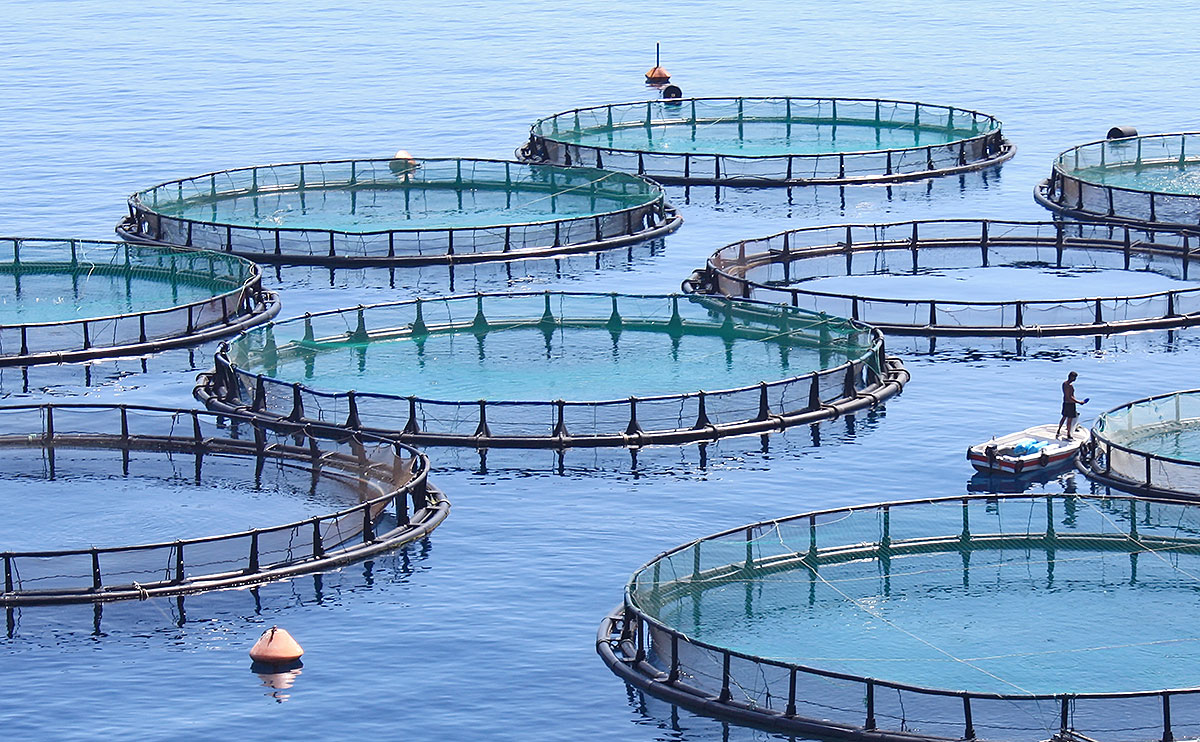Aquaculture is defined as the culturing or farming of
animals or plants in water for any of their life stages. It is a form of
agriculture, and like other forms of agriculture, inputs such as clean water
and nutrients are required. Inputs vary depending upon the requirements of the
target species. Species low on the food chain require few or no inputs or
additives besides clean water. Examples include seaweeds and filter-feeding
animals (clams, oysters), which pick up nutrients and small particles of food
from the surrounding water. These species are more environmentally friendly as
they require no feed inputs or habitat alterations to culture. Species higher
up the food chain (such as predatory groupers, salmon, or tuna) require more
inputs such as fish or fish meal, cereals, or grains. Thus, the net
contribution of aquaculture to food security will depend upon the type of
species chosen and the development of efficient culture methods.
A great variety of species are cultured around the globe,
based on local preferences and suitability of growing conditions. Aquaculture
is conducted in many locations and environments. This includes the use of
streams and raceways, groundwater, rivers, ponds fed by rain, and coastal areas
where tidal movements provide food and water exchange. In addition, some
organisms are raised in cages placed in lakes, bays, and increasingly in the
open ocean itself. Aquaculture can be conducted on an intensive (high density
and high inputs) or extensive (low density and low inputs) basis.
With all its potential benefits, aquaculture can also carry
risks. Aquaculture has been responsible for introducing exotic and invasive
animals, plants, and diseases around the world, often inadvertently through
development assistance. Ecosystems have been disrupted by these invasive
species or diseases, leading to reduced productivity of natural systems, loss
of local livelihoods, and threats to local or even national economies. With
intensive farming and the addition of more feeds and inputs, as required with
higher trophic level animals or high intensity culture, the potential for
producing more effluents, disease, and pollution can rise considerably. As more
species are cultured, genetic stocks are transported around the world, creating
the risk of escape of cultured stocks into the wild. The use of good management
practices, along with strong policy, regulation, and oversight, can help
minimize these and other risks.
This guide speaks to the need for the aquaculture sector to
continue to play a responsible role in addressing the food challenges of today
and tomorrow by reducing impacts on adjacent water bodies, habitats, and
biodiversity; and preventing conflicts over water resources and feed stocks. A
key message is that there is a need for a more integrated approach to
assessment, planning, and management of both fisheries and aquaculture sectors,
with the goal of achieving a “systems approach” to sustainable and resilient
food production.
SOURCES FOR MORE INFORMATION:







0 Comments